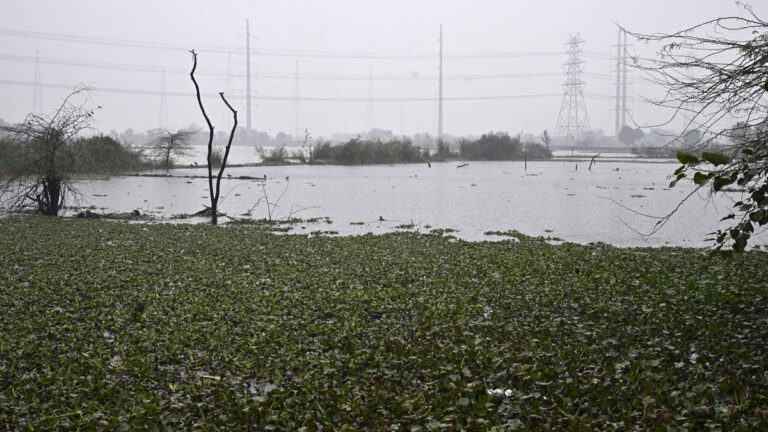
The WRD looks to implement various projects, including creating new reservoirs, restoring supply channels, and building a network of check dams and channels for inter and intra basin transfers, over a project period of five to 10 years.
| Photo Credit: B. VELANKANNI RAJ
To make the city and the Chennai Metropolitan Area (CMA) water abundant and flood resilient, the State government has approved a Water Security Plan under the Chennai City Partnership Programme.
A Government Order (G.O.) was recently issued directing the Water Resources Department (WRD) to adopt the plan, which has recommended 704 works to conserve floodwater and create a decentralised water supply system to mitigate the impact of climate change in the region.
With an aim to combat climate change-induced recurrent floods and droughts in Chennai and surrounding coastal districts, the Water Security Plan aims to integrate supply, demand, and governance plans.
The G.O. said there was a gap in the current demand and supply of water in the city, as the Chennai Metropolitan Water Supply and Sewerage Board (CMWSSB) supplied 1,040 million litres a day (mld) against a demand of 1,720 mld (as estimated in 2020).
Rising water demand
According to the CMWSSB’s Master Plan, the water demand in the city is likely rise to 38.73 thousand million cubic feet (tmcft) in 2050. With the recommended projects under the Water Security Plan, there is a potential to create additional storage and harness a total of 39.74 tmcft of water in 2050. Twelve water basins, including the Chennai and Palar ones, have been considered for project recommendations in the CMA.
Sources in the WRD said the department would be able to proceed with specific studies, project implementation, and fund tie-ups following the crucial step of government approval. Various interventions have been planned under three strategies — conservation of floodwater runoff at source, including rivers and catchment areas; climate adaptive rejuvenation of waterbodies focusing on boosting storage capacity, and regulation of flash floods and river training and flood protection works.
The WRD looks to implement various projects, including creating new reservoirs, restoring supply channels, and building a network of check dams and channels for inter and intra basin transfers, over a project period of five to 10 years. Some of the long-term ones will even be implemented over more than 10 years.
B. Sakthivel, hydrologist and consultant, who is part of the project, said the plan would address capacity enhancement of existing waterbodies. Further investment on projects should be done based on the plan’s recommendations for water conservation, flood mitigation, groundwater recharge, and climate resilience.
Some of the projects include upgrading 350 tanks, including the ones in Thenneri, Sriperumbudur, Manimangalam, and Pillaipakkam, into reservoirs with additional storage capacity. Three barrages will be created across the Palar to work as riverine reservoirs. Several groundwater recharge structures will be set up along the coastal belt. The government will fund the projects and receive reimbursements from funding agencies, including the World Bank, after the project is completed, said sources in the WRD.
Published – June 24, 2025 12:09 am IST



